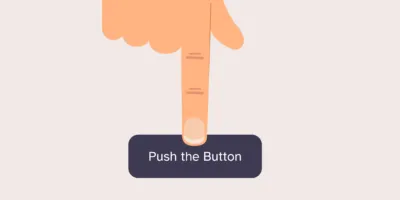24 May 2023
10 tips for smoother design projects

10 tips that will help your design projects to run more smoothly.
-
James Chudley
Experience Director
James Chudley
Damien Newman’s design squiggle brilliantly encapsulates what design projects feel like as you move from the mess and uncertainty of exploring ideas to defining a solution.

The mess and uncertainty can feel stressful, chaotic and really uncomfortable.
Some people love it.
Others want to run for the hills.
But you don’t have to have a bad experience when you’re trying to design a good experience for someone else.
Here are 10 tips that will help your design projects to run more smoothly.
1. Hire a project manager to keep everything on track
Project managers are the unsung heroes of design projects.
They keep everything moving, protect the team and ensure delivery happens on time and on budget.
If you don’t have a project manager then you are the project manager and from experience that doesn’t end well!
2. Have a proper kick off meeting
Kick off meetings are a vital project ceremony.
They help to ensure everyone knows who is who, what they do and what role they’ll have on the project.
You should discuss what you’re trying to achieve, how you plan to approach it and what might get in your way.
Make sure you encourage people to share their hopes and fears and what success looks like to them.
Most importantly make it engaging and collaborative to set the tone for the rest of the project.
3. Write a short form brief to clarify the job in hand
Writing a short form brief helps you to clarify your understanding of what you’re doing and why you’re doing it.
Use headings like these to help you to structure it:
- ‘What’s the problem to be solved and why is it important?’
- ‘What do we plan to do?’
- ‘What hypotheses / assumptions will we explore?’
- ‘How will we know if we’ve been successful?’
- ‘What will we measure?’
- ‘What outcomes do we want to happen as a result of the work?’
- ‘What principles will we follow?’
Once you’ve got a clear and shared understanding of the job in hand you’ll have half a chance of managing to achieve it.
4. Create a shared expectation of key deliverables
A team can happily all agree on what they are planning to create but individually hold a completely different picture of it in their heads.
To avoid this, quickly bring to life what you have in mind and share it with your team.
On a recent project for example, we shared a list of headings we planned to use to structure a research report in an email to our client.
Their feedback improved our list, ensured everyone was involved in the process and reassured us that we could create what the client needed within our deadline.
5. Communicate regularly
Communication is vital to any successful design project.
Regular communication with stakeholders helps to keep them informed of progress and also helps to identify and resolve any issues as they arise.
Use Slack, teams, tea breaks, phone calls, walks round the park – whatever works for you and your team.
6. Do your user research as soon as possible
At the beginning of every project you have huge gaps in your knowledge.
Speaking to users early on starts to fill these gaps as you learn what people are actually trying to do and what problems they are facing.
This knowledge boosts your confidence, accelerates your learning and helps to focus the team on the most valuable problems to solve.
7. Take detailed notes
It blows my mind when I see people not taking notes while nuggets of gold are being shared on projects.
Having detailed notes gives you an absolute superpower.
Use tools like Evernote to get a useful digital extension to your brain.
8. Work out what will keep you motivated
There is something in every project that you can focus on that feels new, interesting and exciting – regardless of the project context.
It could be a new approach, tool or method you want to try out.
Think ‘what do I want to get from this project?” to help keep you motivated.
9. Look after yourself
Design projects can really take their toll on your wellbeing, particularly when you’re deep in the maelstrom of the ‘squiggle’.
Design is a ‘thinky’ job and our brains don’t clock off at 17:30.
Think about poor old Archimedes trying to chill out in his bath!
Make sure you proactively take steps to look after yourself to avoid burnout.
10. Embrace the ‘squiggle’ as a natural part of the design process
The nature of the ‘squiggle’ means that you need to be flexible and open to change because things will not always go according to plan.
No plan survives first contact with the enemy. What matters is how quickly the leader is able to adapt.
Changing direction is a great thing because it shows that you are responding to what you are learning.
––––––
Thanks to Marina Montalban de la Mata , Sharon Webster and Sam Stevens for help with this article.
I’d love to hear what you’ve found has helped your design projects to run more smoothly.
Please share your thoughts, experiences and feedback on LinkedIn.
Learn more about 10 tips for smoother design projects



